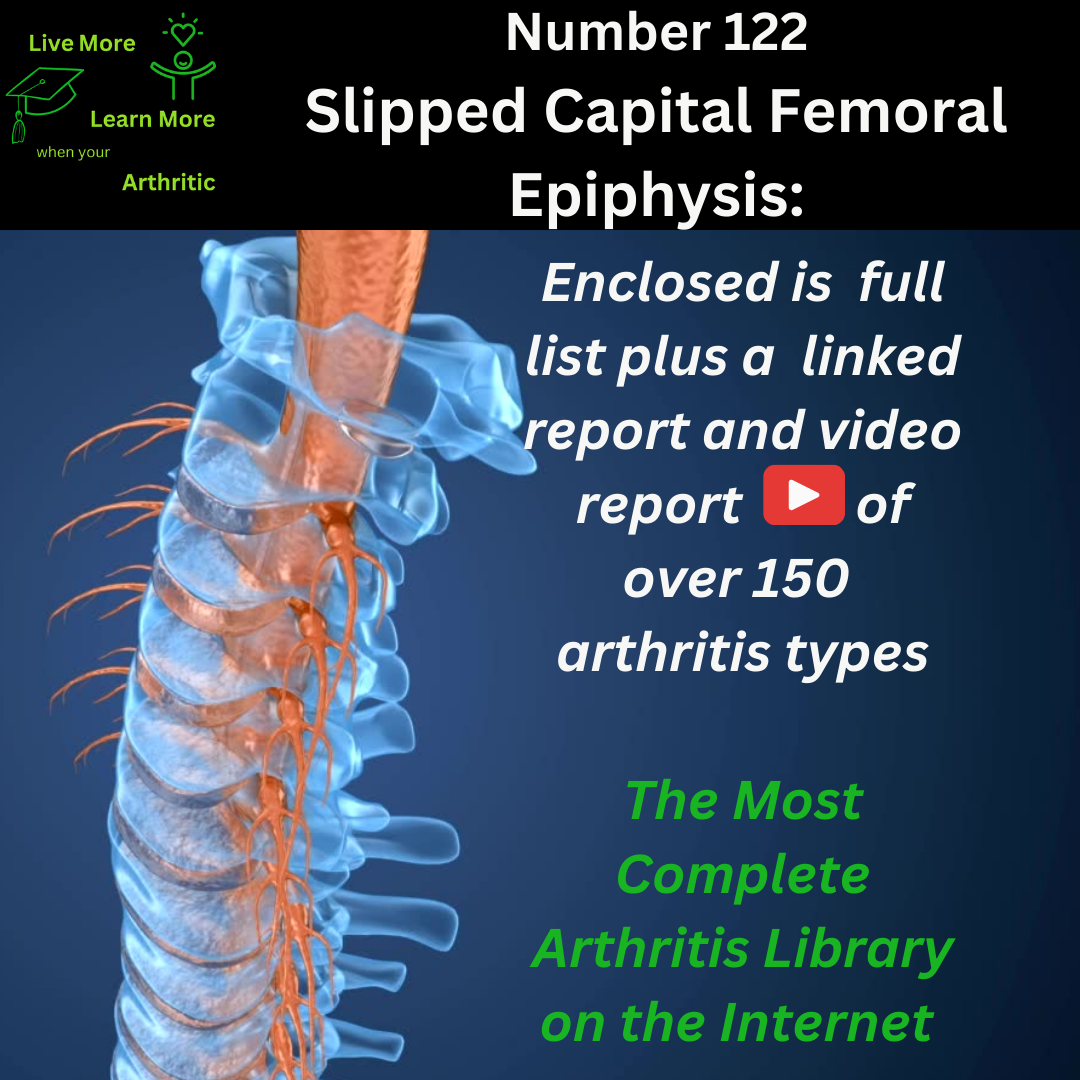
Slipped Capital Femoral Epiphysis: Number 122 of around 150 types of Arthritis
Understanding Slipped Capital Femoral Epiphysis
Slipped Capital Femoral Epiphysis (SCFE) is a condition that primarily affects adolescents during their growth spurts, particularly between the ages of 11 and 16 years. It occurs when the ball at the head of the femur slips off the neck of the bone within the hip joint. This displacement can disrupt the blood flow to the growth plate of the femur, leading to potential complications.
The hip joint is predominantly affected by SCFE. This condition causes pain in the hip, thigh, or knee, particularly during activities like walking or sports. Patients may also experience limited range of motion in the hip, where movements like bending or rotating become difficult or painful.
Description and Causes
SCFE is often linked to hormonal changes and the rapid growth experienced during adolescence. This condition can also be triggered by obesity or trauma to the hip joint. The weakened growth plate of the femur is unable to support the weight of the body during growth, leading to slippage.
Risk Factors and Complications
Obesity is a significant risk factor for SCFE, as excess weight places increased stress on the hip joint. Other risk factors include endocrine disorders like hypothyroidism or growth hormone abnormalities. Complications of SCFE can include avascular necrosis (bone death due to lack of blood supply to the hip joint) and arthritis later in life.
Impact on Quality of Life
SCFE can have a profound impact on a young person’s quality of life. The pain and limited mobility can restrict physical activity, leading to social and emotional challenges during a critical period of development.
Managing SCFE and Complications
Early diagnosis and treatment are crucial to prevent long-term complications. Surgical intervention, such as pinning the femoral head to stabilize it, is often necessary to prevent further slippage and restore function. Physical therapy can help regain strength and range of motion after treatment.
Possible Complications
Complications of SCFE can include chondrolysis (destruction of joint cartilage), hip joint stiffness, and differences in leg lengths. These issues can impact mobility and daily activities, necessitating ongoing medical management and rehabilitation.
Preventative Measures and Proactive Approach
Maintaining a healthy weight and staying active can reduce the risk of SCFE, particularly in adolescents. Early detection and intervention are key to minimizing the impact of this condition on a person’s life.
Epidemiology and Gender Predominance
SCFE affects boys more frequently than girls, with a higher incidence observed in males during their adolescent growth phase. However, it can occur in both sexes and should be promptly evaluated by a healthcare professional.
Patients with SCFE may have underlying endocrine disorders or metabolic conditions that contribute to the development of the condition. It’s essential to evaluate these factors to guide appropriate management and follow-up care.
In conclusion, Slipped Capital Femoral Epiphysis is a condition that requires prompt attention and intervention to prevent long-term complications and preserve quality of life, particularly in young individuals during their critical growth phase. Early detection, coupled with proactive management strategies, can significantly improve outcomes and minimize the impact of this condition on daily life.


